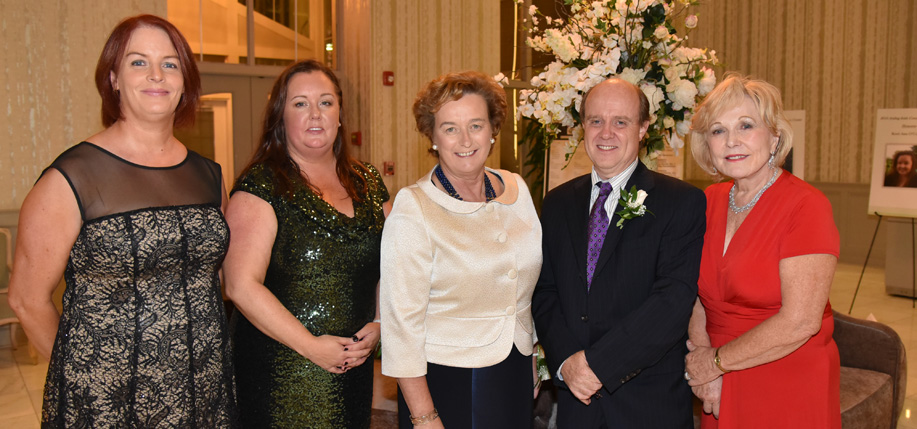New York’s Aisling Irish Center celebrated its 20th year of providing community programs and social services to Irish immigrants in October.
As revealed by executive director and Kerry native Orla Kelleher in an IrishCentral interview, the center saw its beginning in the town of Bainbridge in Chenango County, New York. “From what I’ve been told, it was set up by a few people in the back room behind a bar to help the most vulnerable of Irish immigrants,” she added. “So that’s how it got together. Just a few people shouting, trying to figure out a way to help those who needed help.”
In 1996, the Aisling Center relocated to McLean Avenue in Yonkers, where it still stands today. “One third of our funding comes from the Irish government, the Irish Abroad Unit, the immigrant program,” said Kelleher. “There is also great support, not just from the local community, but from the Irish American business community.”
Since the center’s opening, it has expanded its reach to aid those of all nationalities, running weekly lunches for seniors, counseling services funded by the Irish government, classes in Irish culture, language, and dance, computer courses, and Spanish conversation lessons.
“It’s like an extra gene or cell in us,” Kelleher says of the Irish compulsion to give back. “It’s a great thing about the Irish community here that they are always willing to help somebody else out, and not just Irish people exclusively.” ♦
Aisling Irish Center Celebrates 20 Years


Is it actually true that the driving Aisling Center in Woodlawn, Bronx, actually had its beginning in Bainbridge, Chinango County, New York?. I occasionally visit the Veterans Clinic in Bainbridge for blood tests before I have an appointment at the Albany Veterans Hospital. Since 2013 I have been Commander of the Franklin American Legion, the duties of which include being Master-of-Ceremonies at the annual Memorial Day celebrations. My first announcement of the 2016 celebrations was that Kerry Native Corporal Patrick Sheahan was awarded a Bronze Star and later a Silver Srar posthumously as a U.S. Soldier in the Korean War and
Is gives one a a strong sense of pride to view the above picture which has this very pleasant group of Irish people, nearly all of whom are women. One is reminded of the ad Aer Lingus had in the mid ’70, which the crew off its transatlantic frights. The ad seemed to suggest that one should rush to the nearest travel office and buy a ticket for an Aer Lingus flight to Ireland. IS MÓr AN BRÓD ATÁ ORAINN TOSC GUR ÉIREANNAIGH SINNGE.
Those who successfully manage this Irish Immigration Center can now get their hopes up that the that the remains of 5 Irish immigrants who lost their lived in the Korean War while serving with the U.S. military would returned to the U.S. These 5 were Sgt. Thomas J. O’Brien, Emly Co. Tipp, who was K.I.A. Oct. 1950 – a BRONZE STAR winner whose body was never recovered; PFC. Patrick McEnerny, Glin, Co. Limerick, KIA North Korea in Nov. 1950 -body never recoverded; Pvt. William J. Mills, Belfast, Killed North Korea Nov. 1950, whose body was never recovered. William F. Murphy, Cork City, taken P.O.W. in North Korea Feb, 1951,- body never recovered. Pfc John White USMC, Caherdaniel, Kerry, became a P.O.W. in Oct. of 1952-body never recovered. Let us all hope and pray that the remains of tthese 5 Irish immigrants who lost their while serving the U.S. will soon be recovered.
Congressmen, senators, mayors, governors, bishops and cardinals should be made fully aware of the contributions Irish immigrants have made to this nation’s defense forces in all wars, including the Revolutionary War, especially when it comes to discussing todays immigration laws, which makes it almost impossible for Irish immigrants to legally enter the U.S. at the present time.
Irish Centers all over the U.S. would have a very good reason foe celebrating if the authorities in D.C. fully recognized the valuable contributions successive generations of Irish immigrants made to this country prior to 1965, when laws were enacted that virtually closed the doors do would-[be Irish immigrants. In the ’60 s, I was one of at least 10 immigrants from The Rockchapel district in northwest Cork to honorable serve in the U.S. military and for the past 6 years I served as Commander of my local American Post.